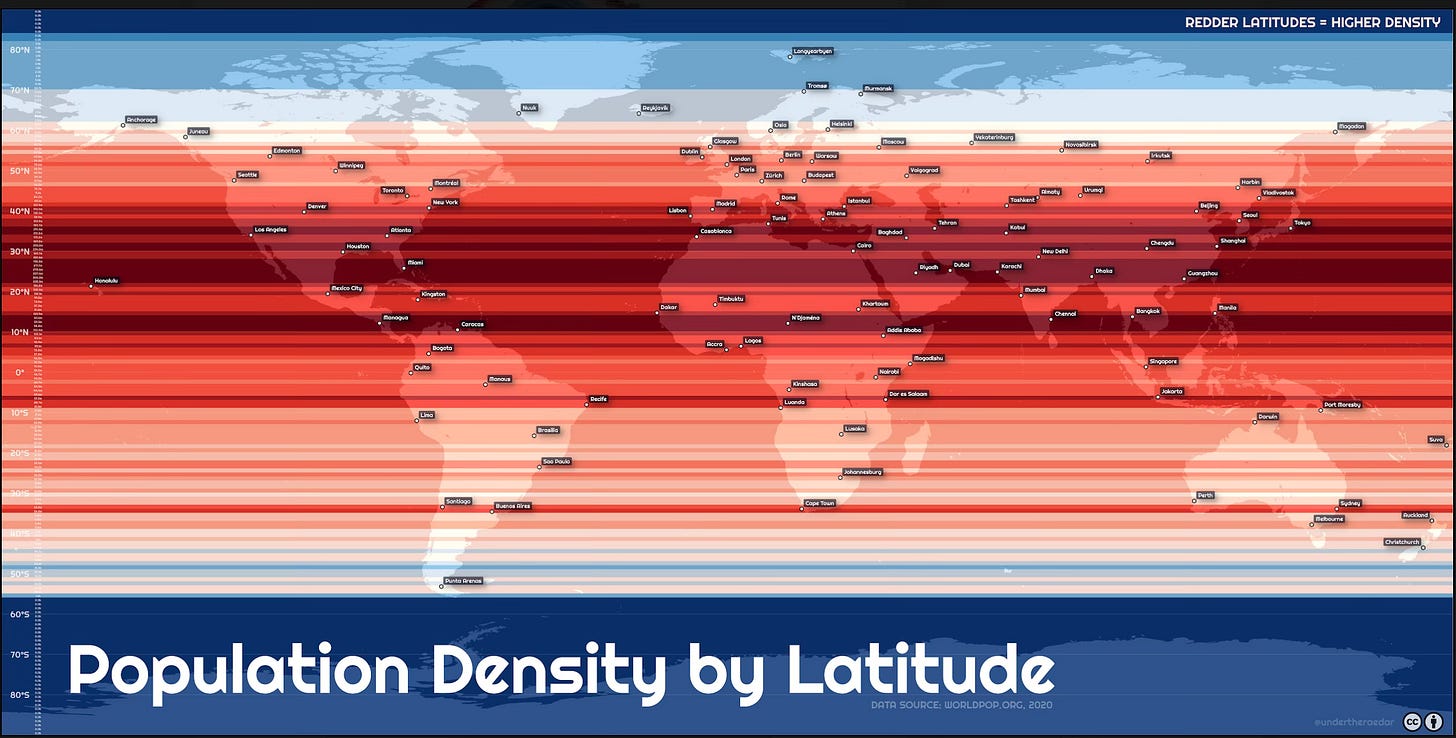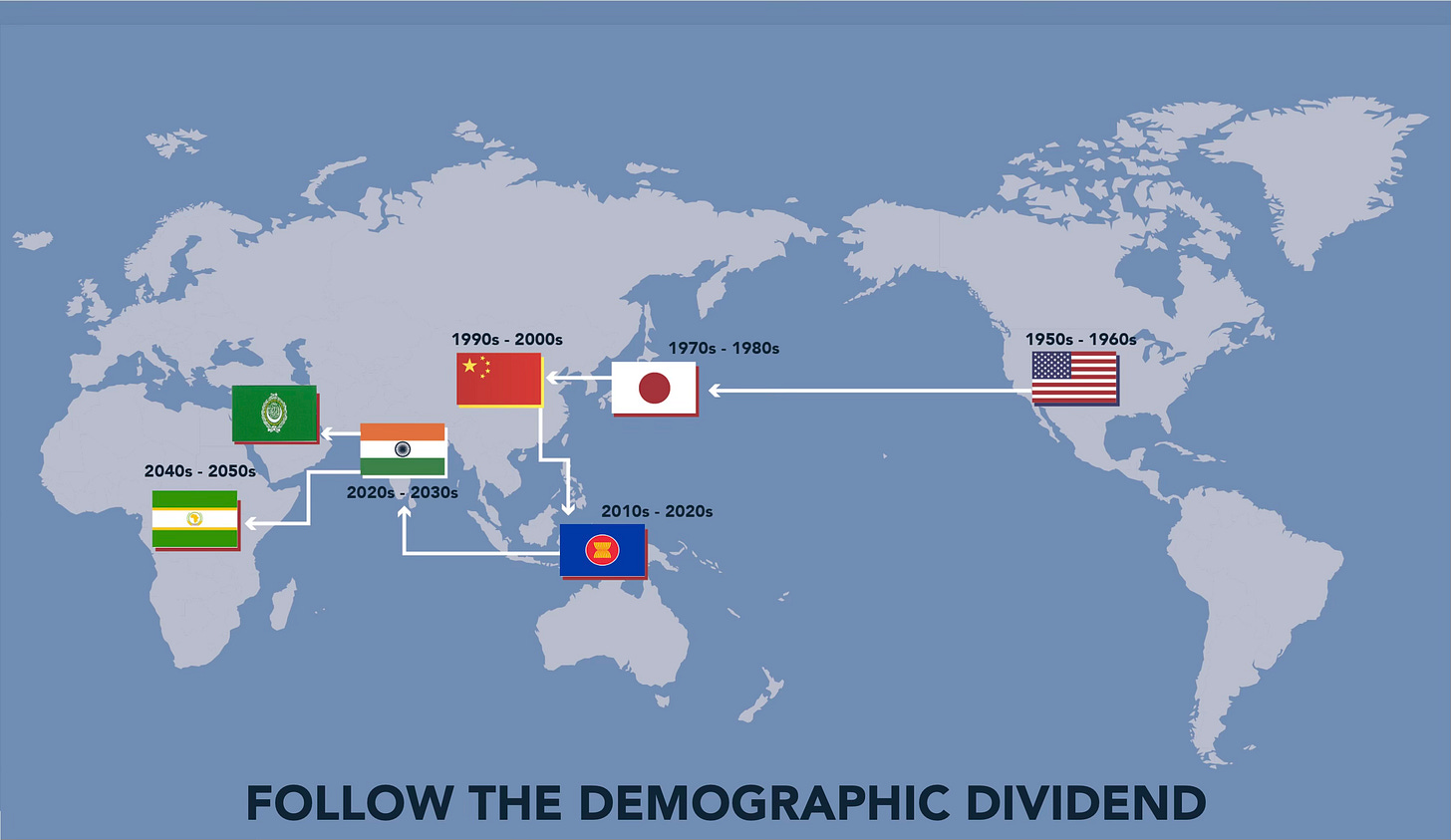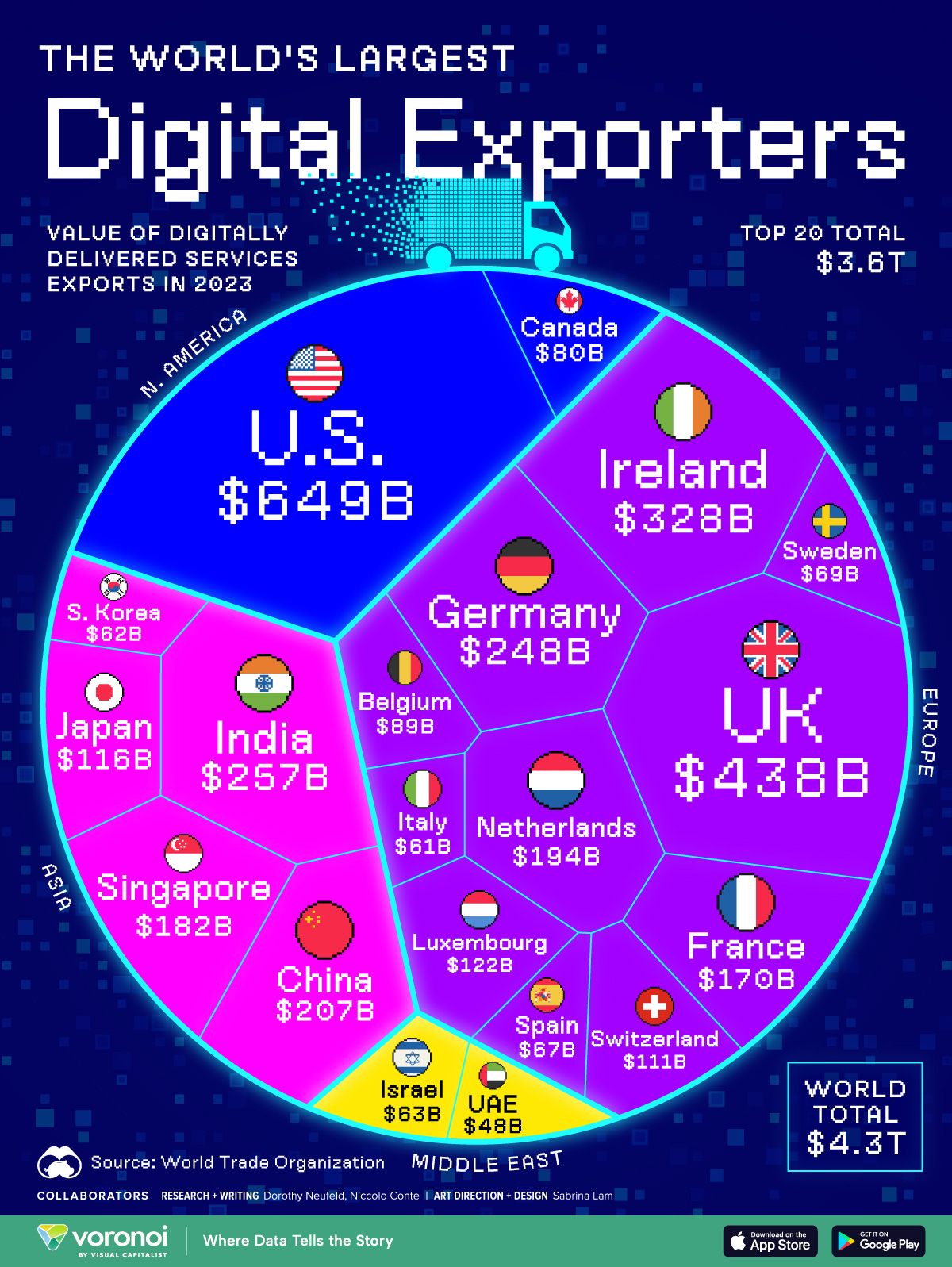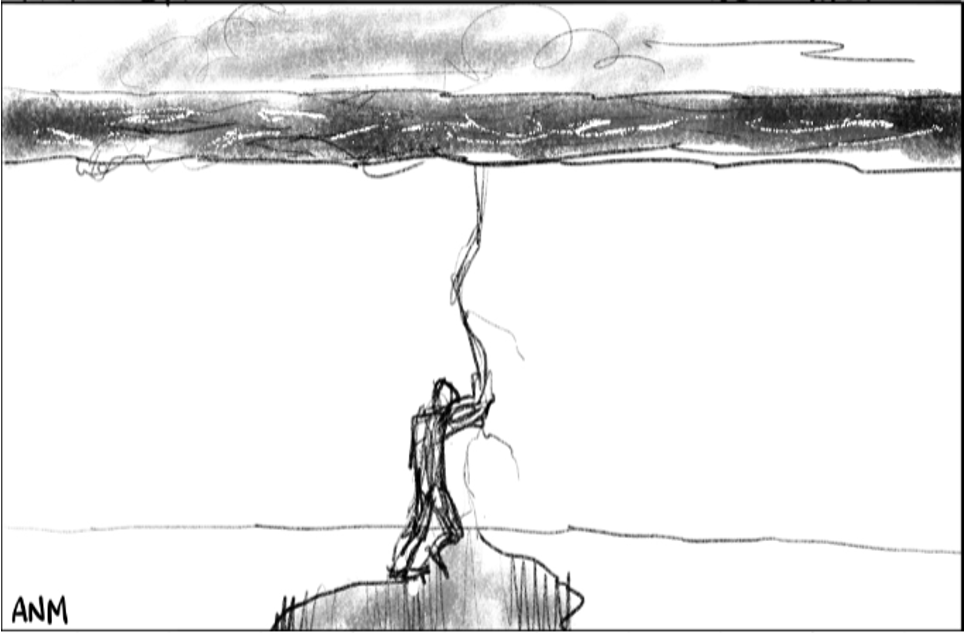1) The Great Dehumidification of Middle Earth
NYT: Three-Quarters of Earth’s Land Got Drier in Recent Decades, U.N. Says
YAHOO: Report finds nearly every US state suffering from 'unprecedented' natural disaster: 'The greatest number ... in history'
H/T Jeff Itell.
Climate change is significantly altering humidity patterns across the globe, leading to a dehumidification in lower latitudes and humidification in higher latitudes. This phenomenon is primarily driven by the warming of the planet, which affects atmospheric moisture, retention, and distribution.
Remember those simple truths and all will remain relatively understandable in the years ahead.
From the UN study, per the NYT:
From the American West to eastern China, more than three-quarters of Earth’s land became persistently drier in recent decades, according to a new United Nations report that called the shift a “global, existential peril.”
Roughly half of the world’s landmass lies within my Middle Earth band stretching 30 degrees north and south of the equator, as does the majority of the world’s population (clustered more to the top of that band than to the bottom), and that’s where the land surface and underground aquifers are losing water fastest due to climate change and overuse/poor management.
When I say, as I do in my briefs, that Middle Earth progressively endures a climate akin to the Saharan Desert (high average temp approaching 90 degrees Fahrenheit and very low precipitation), the best way to think about that evolution is in terms of how many days in the year a location achieves that effect.
For example: this year Phoenix had 100+ days in a row of 100+ degrees. In the future, that total number of such days in an average year is just going to go up and up, adding weeks, as it were.
So, this future that we must accommodate … it’s already here in bits and pieces, slowly invading our calendar year.
When you look at it like that, you can see its effects more clearly.
You can also put away the science and just believe your eyes and lungs and heart and skin.
This great shifting of water in our climate (low latitudes to high, more generally from surface to atmosphere) means water management is life management going forward.
We have reached Arrakis alright. Water is life.
2) Calling all hand maidens!
FORTUNE: Tokyo is turning to a 4-day workweek in a desperate attempt to help Japan shed its unwanted title of ‘world’s oldest population’
KOREA TIMES: More Korean company executives asked to work six days a week
Two countries with the same birth-dearth problem.
One calls for a six-day work week, the other for a four-day work week.
Sounds like the beginning of a fairy tale, doesn’t it?
East Asia doesn’t know whether it’s coming or going.
[Leave that pun alone.]
It will get far weirder, trust me.
The irony, of course: climate-driven migration pressures from lower latitudes provides the cure — just in the “wrong” color, most of the time.
For now, we witness these flaccid attempts to jump-start fertility in the Global North.
[That one too.]
The other irony: this push to re-domesticate women dovetails so nicely with the toxic masculinity rising across the Global North, yielding even LESS good will between the sexes.
I could say the Global North is screwed [Also, also.], but that would be misleading and alarmist.
We all just need to find better ways to get along with one another.
3) You can’t go home again
VISUAL CAPITALIST: China’s Rise to Manufacturing Dominance Over 30 Years
VISUAL CAPITALIST: The 20 Largest Digital Exporters in the World
You rise on manufacturing while the cheap labor is there (demographic dividend) and then you must move up the ladder.
China rose:
While America moved up the ladder:
It’s a one-way street.
For those given to nostalgia, I say, get over it.
Because, believe me, the Tech Bro billionaires being brought in now to fix things, they most definitely know it, and accept it, and aim to exploit it.
From America’s New Map:
The globalization of the 1990s and 2000s was a goods-intensive phenomenon, which, since the Great Recession, has flatlined. Today’s globalization, rising phoenix-like from the ashes of that worldwide financial crash, features service-intensive trade with exponentially expanding data flows. Global data flows were negligible at the turn of the century. Per the McKinsey Global Institute, they now account for more value added to global GDP than do traded goods—the effective digitalization of globalization. Remember that the next time some pundit declares globalization dead and buried.
In the decade surrounding the 2008 crash, cross-border data flows and cross-border bandwidth-in-use jumped forty-five-fold. If the previous era’s globalization leveraged cheap transportation, then this one capitalizes on cheap communications. Every global transaction today contains digital content, even as we do not yet possess good methods for measuring data flows—much less policing them.
Pull out those decoder rings.
VUCA = BS, & XAI is the future!
4) Telegraphing that gut punch
TELEGRAPH: America’s economy ‘risks massive Trump slump’
Recall that in recent US history, GOP POTUS = recession every single time.
Paul Mortimer-Lee of the National Institute of Economic and Social Research (NIESR) said the “ill-considered, rushed and damaging” combination of tariffs, the mass expulsion of illegal immigrants, tax cuts and spending efficiencies was “likely to tip the US economy into recession.”
Mr Mortimer-Lee said: “In a worst-case scenario, where immigrant expulsions are massive, tariff increases hit straight away and retaliation is swift and effective, GDP could contract by two to three percentage points.”
Such an outcome would mark a massive slump when compared to the strong growth enjoyed by the US this year. NIESR estimates America’s economy will expand by 2.8pc in 2024.
Everybody knows that Trump wanted the “revenge” of re-election most of all and that, as a result, he has little interest in actually governing anything going forward, which means those surrounding him will — with his casual okay — “run wild.”
We are going to test a whole lot of economic and social theories for 24 months.
Hang onto your hats.
5) Warning signs of things to come … turn me over, turn me over!
WAPO: Why a two-year surge in global warmth is worrying scientists
You know the bad part that scientists were warning could happen down the road?
Well, it turns out not to be that far down the road.
As 2023 came to a close, scientists had hoped that a stretch of record heat that emerged across the planet might finally begin to subside this year. It seemed likely that temporary conditions, including an El Niño climate pattern that has always been known to boost average global temperatures, would give way to let Earth cool down.
That didn’t happen.
Instead, global temperatures remain at near-record levels. After 2023 ended up the warmest year in human history by far, 2024 is almost certain to be even warmer. Now, some scientists say this could indicate that fundamental changes are happening to the global climate that are raising temperatures faster than anticipated.
So now the models say more heat, more fast, surprising just about everyone in the business.
We are nearing lift-off:
Some scientists are worried the oceans have become so warm that they won’t cool down as much as they historically have, perhaps contributing to a feedback loop that will accelerate climate change.
We approach the no-turning-back point.
Many straws, combined with an overburdened camel.
6) Being sold a bill of space goods
WAPO: Elon Musk’s Martian dreams are a boon to the U.S. military
I believe we’re in a fierce competition with China to win over the Global South to either democracy (our model) or authoritarianism (Xi’s dream). I also believe that that struggle is highly dependent on our technology beating theirs in meeting economic demand there in a non-Orwellian manner.
Can I gift wrap all that up in some present and slap a space-technology bow on top?
Ehhh …
I don’t really need to, but will I accept it?
Will I run with Musk’s storyline on his Mission to Mars keeping us all safe from having to learn Mandarin?
We all remember how the Soviets motivated us to the moon, so why can’t China motivate us to Mars?
I am always going to argue for space exploration and all the advances that come with it. So, yeah, if throwing in China helps motivate you, I’m fine with that.
Don’t actually believe it, but I’m fine with that.
Musk is the price we pay when we privatize space-faring, and ultimately that is a good thing.
7) (Keep) Open the kingdom!
EURASIAN TIMES: NATO Membership: Five Nations Seek Entry Into U.S.-Led Military Alliance; Many More ‘Ukraines’ In The Making?
Rather asinine fear-mongering, but hey! It’s the Eurasian Times.
Instead of celebrating what NATO represents and so naturally attracts, many choose to vilify and blame.
Everybody wants to join the club, except that Brute who often beats up anyone who raises the possibility within his old clan
Wow! It must be the club’s fault!
Certainly we can’t blame that Violent Sociopath!
In fact, we should close the club to new members.
That’ll show Him!
It doesn’t get much stupider and self-flagellating than that.
NATO is becoming a battered women’s shelter, and there is great nobility in that empathy - the kind of revenge film worth producing.
Russia under Putin is the Great Alienator — not NATO.
Anybody tells you different is pulling your leg.
NATO offers a way ahead; spouse-pounding Moscow offers no way out.
Which “enemy” would you choose to sleep with?
8) Yet another dangerous feedback loop
NYT: Arctic Tundra Has Long Helped Cool Earth. Now, It’s Fueling Warming.
Referenced this in America’s New Map:
Over the next decades, humanity faces several accelerating feedback loops that will trigger no-turning-back points in regions such as the Arctic/Ant- arctic (ice melt, loss of solar reflection); Amazon (carbon-sink loss); and Siberia (methane release). Once tipping points are reached, the resulting climate dynamics leap beyond human causality and become self-perpetuating.
The NYT notes the scientists noting that:
Wildfires and thawing permafrost are causing the region to release more carbon dioxide than its plants remove, probably for the first time in thousands of years.
It’s starting to show:
“The Arctic today, year after year, looks vastly different than the Arctic did 20 years ago,” said Twila Moon, an editor of the report card [National Oceanic and Atmospheric Administration’s Arctic Report Card] and the deputy lead scientist at the National Snow and Ice Data Center in Boulder, Colo.
Wake up and smell the methane.
9) Po-tay-toes! Boil 'em, mash 'em, stick 'em in a stew!
ALJAZEERA: Chinese scientists rush to climate-proof potatoes
The lack of potatoes brought some of my people to these lands. They remain crucial to global food security.
China, of course, is the biggest producer and consumer.
The problem is their vulnerability to heat — both the Chinese and their potatoes.
So the Chinese are working this issue — hard:
Farmers in China say they are already feeling the effects of extreme weather events and are increasingly demanding potato varieties that are higher yielding and less susceptible to disease, particularly late blight, which caused the Irish Potato Famine of the mid-19th century and thrives in warm and humid conditions.
It’s not about bigger potatoes, but hardier ones.
10) For want of a port …
BUSINESS INSIDER: A Chinese invasion of Taiwan would depend on seizing its ports. That won't be easy.
A new book by US Naval War College researchers highlights the practical side of any Chinese invasion of Taiwan:
There are two requirements for a major amphibious invasion. The first is storming the beach.
The second is no less important — seizing a port. Without docks and cranes to unload reinforcements — especially armored vehicles — and supplies, everything has to be brought in over the open beach or flown in by helicopter. This can result in a race against time: can the invaders reinforce a large enough beachhead before the defenders try to push them into the sea?
As it contemplates an invasion of Taiwan, China is well aware of this problem. It knows full well that Taiwan will desperately defend its ports.
Excellent report led by THE star in the business of analyzing China and its navy — Andrew Erickson.
Last time we crossed paths was in China at something vaguely naval, if I recall correctly. Great guy.
Andrew is having the type of career at the NWC that got me fired when I tried it a couple of decades earlier, and that makes me happy.
I can remember sitting in the JAG’s office at the college, and she explaining that her pile of Tom Barnett stuff was “this high” compared to the rest of the entire college being only “so high.”
That’s when I knew the jig was up.
Problem is, when you blaze a trail, your ass is always on fire.
11) Where exactly does one find the “camp of the saints”?
AXIOS: Yale scholar argues Book of Revelation sways immigration policy
Looks like a fascinating book.
I myself wrote about this notion/connection in America’s New Map but then cut it:
"America's New Map" Deleted Scene #2
I was determined to make a strong case in the book for a linkage between Americans’ fear of immigrants and — more specifically — White Americans’ fear of displacement into majority-minority status. To that end, I wanted to spend some time on the a key source of that argument, the 1973 French novel by Jean Raspail entitled
The specific tie-in to the Bible’s craziest bit:
Like any religion, this racially-charged millenarianism adheres to certain sacred texts (e.g., Protocols of the Elders of Zion, Mein Kampf, Turner Diaries), but the book most pertinent to understanding current White/European existential angst over globalization is the French dystopian novel The Camp of the Saints by Jean Raspail. The title, lifted from the Book of Revelations, refers to those innocent souls holding out as a returned Satan moves to devour them.
Best documentary on the subject:
There’s always a racial component to the End Timers and their visions, which is why so many of their anticipated triggers involve “race wars” where Whites are forced to wipe out non-Whites determined to kill them.
According to most recipes, zombies are an acceptable substitute ingredient.
12) The conventional wisdom on India
FOREIGN AFFAIRS: India Will Carve Its Own Path
I try not to read Foreign Affairs too much. To me it’s akin to the threat represented by AI: the stultifying regression to the mean and the death of creativity.
If you want to know what a stew of every conventional concept regarding some subject would taste like, read about it in Foreign Affairs.
This one is less worse than most.
Should America promote India as a “third pole” to counterbalance risen China?
No, sayeth this Wise One:
American officials should consider a more complex strategy. New Delhi is a valuable partner in many domains, including the competition with Beijing. But India is notoriously intransigent in world politics. Its behavior on the global stage sometimes worries even those countries that want or need to develop friendly relations with it. Should India acquire the heft to become, as U.S. officials hope, a true counterbalance to China, it will likely also consider itself a counterbalance to the United States. In short, a tripolar world, with India as the third pole, will not strengthen Washington’s or Beijing’s hand. Instead, it will produce a more unstable global dynamic.
It’s the last bit that caught my eye, mostly because I think it’s nonsense as a prediction — too old-school balance-of-power, too much a geo-political view of a system-enhancing dynamic that is overwhelmingly economic in nature (Foreign Affairs remains clueless on economics and thus less relevant by the year).
This judgment is really just an intellectual tailbone left over from game theory applied to nuclear standoffs: two is more stable than three, we are told for reasons no one can prove.
I mean, somehow the world has nine nuclear powers and no nuclear war for almost eight decades now, so … huh?
The rest of the piece devolves into psycho-killer babble:
You start a conversation, you can't even finish it
You're talking a lot, but you're not saying anything
When I have nothing to say, my lips are sealed
Say something once, why say it again?
India matters because it picks up the demographic dividend mantel from China via SE Asia and helps to extend it toward the Middle East and Africa.
That is India’s role and it’s a stable one if it succeeds, something both China and the US should work to promote because both will benefit greatly by India’s rise.
Tripolar shmipolar!
The rest is just agita-mongering.























